Observing Night
All you need are clear skies, a telescope, and a plan. Make it a great one.
“For my confirmation, I didn’t get a watch and my first pair of long pants, like most Lutheran boys. I got a telescope. My mother thought it would make the best gift.” –Wernher von Braun
Every once in a while, astrophysicists, astronomers or even simple enthusiastic skywatchers get an opportunity like no other: the chance to showcase, to a new audience, what it’s like to look through a telescope for the very first time.

Tonight, at my college in Portland, OR, a city steeped in light pollution and often covered with clouds, I’m taking my introductory astronomy class to the observatory, where many of them will get to look through a telescope for the first time.
Why tonight? Simple: clear evenings are a rarity around these parts, especially at this time of year, but the weather forecast for this night looks beyond spectacular.

Tonight also happens to be great for a number of independent reasons:
- It’s winter, so it gets dark early, and it happens not to be too cold tonight.
- The Moon is very close to its new phase, meaning that the most significant natural source of light pollution won’t play a factor.
- And finally, there are a number of transient objects — major planets and even a comet — that are visible right after sunset.
Before you get started making a plan, no matter how good the conditions, there are a few things you’ll want to consider.
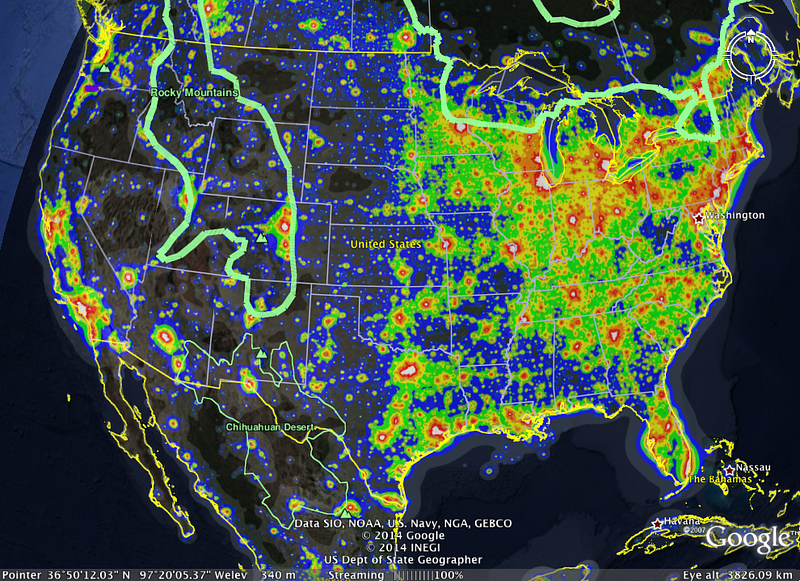
1.) How good are your skies, in terms of darkness? Even with a new Moon, which is what you can control to maximize how dark your sky is, the ambient light pollution from wherever you’re located will greatly affect what you can see. In particular, extended objects — things like nebulae and galaxies — will be incredibly hard to see if your sky suffers from significant amount of light pollution.
As a rule-of-thumb, if you’re within 10 miles of a small city (like Gainesville, FL, Albany, NY or Elko, NV), 20 miles of a medium-sized city (like Madison, WI, Eugene, OR, or Topeka, KS) or 30–to-50 miles of a very large city (Los Angeles, Atlanta, Chicago or St. Louis), you should probably steer clear of extended objects altogether. Unless, that is, your telescope is huge!
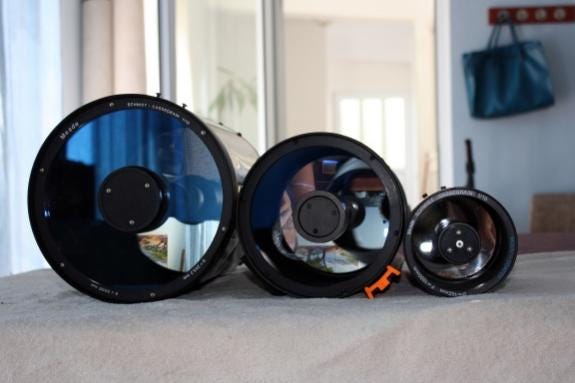
2.) How big is your telescope? When it comes to what you can see — and how well you can see it — through the eyepiece of your telescope, size is almost everything. This doesn’t mean the length of your telescope, but rather the aperture, or how much light it lets in.
Both the resolution and faintness of what you can see with your naked eye is limited by the size of your pupil, which is typically between 0.4 and 0.7 cm in diameter at night. A small telescope will have an aperture between 3″ and 4.5″ (about 7.6 cm to 11.4 cm), while large ones may be 12″ (30.5 cm), 18″ (45.7 cm) or even 24″ (61 cm) or more! Every time you double the aperture of your telescope, you quadruple how faint an object you can see. This correspondingly increases the number of stars and the amount of detail you can see in any given region of sky, or in any particular deep-sky object.
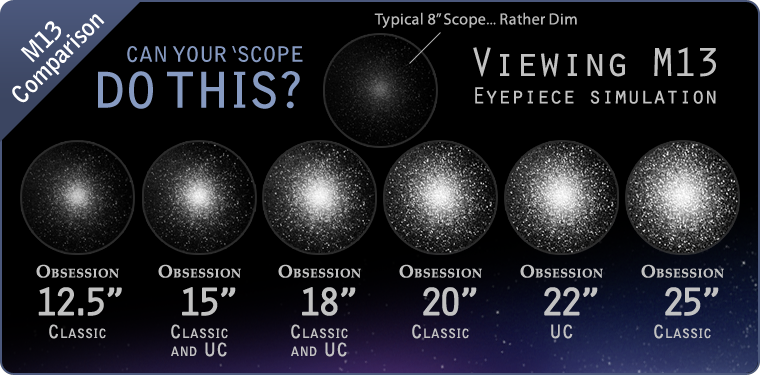
At a dark-sky site (with very little light pollution) your naked eye can see a few thousand stars in the sky at any given time. For comparison, a 2″ telescope (about 5 cm in diameter) can see close to a million and a 20″ telescope (about 50 cm in diameter) can resolve over 100 million in the sky. A telescope of at least 6″ (15 cm) aperture is necessary to resolve features of nebulae or galaxies under good, dark sky conditions, with even larger ones necessary to see those same features under less-than-ideal conditions.
Now that you’ve thought about your conditions and your equipment, it’s time to think about what you’re going to look at. This is the fun stuff! Here are my top recommendations for this time of year, skewed (as always) towards the northern hemisphere.
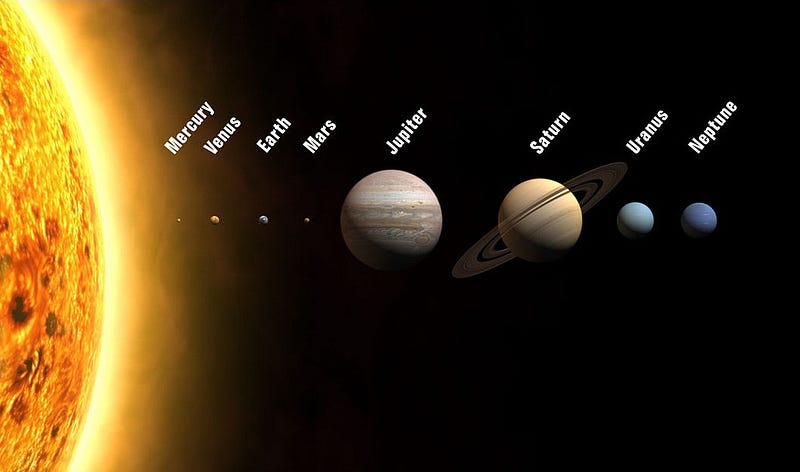
Planets! The most spectacular of these are always Saturn, Jupiter, Mars and Venus, whenever they’re visible. Planetary viewing is always my top recommendation for people who’ve never looked through a telescope before, and for people in light-polluted areas, since:
- Even small telescopes allow you to see spectacular sights, and
- Light pollution has the smallest effect on planets of any objects in the sky.
They’re each individually spectacular for different reasons.
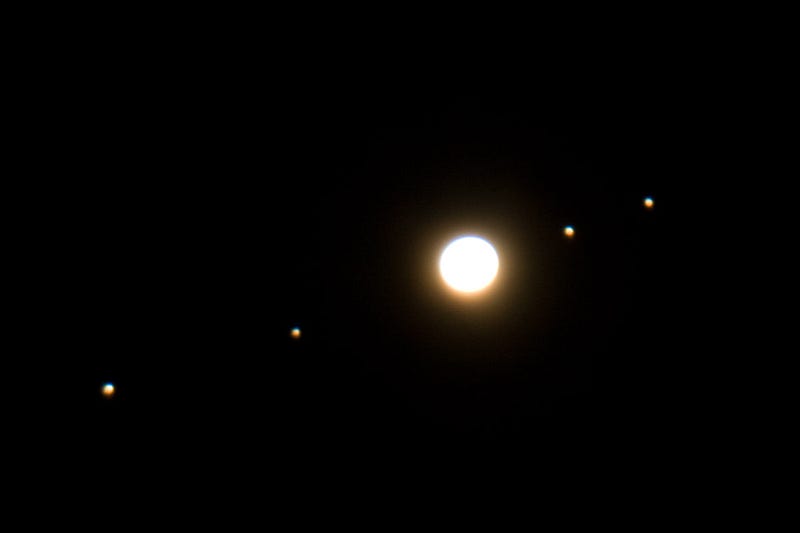
Jupiter’s Moons are always visible around it, allowing you to relive what Galileo saw.
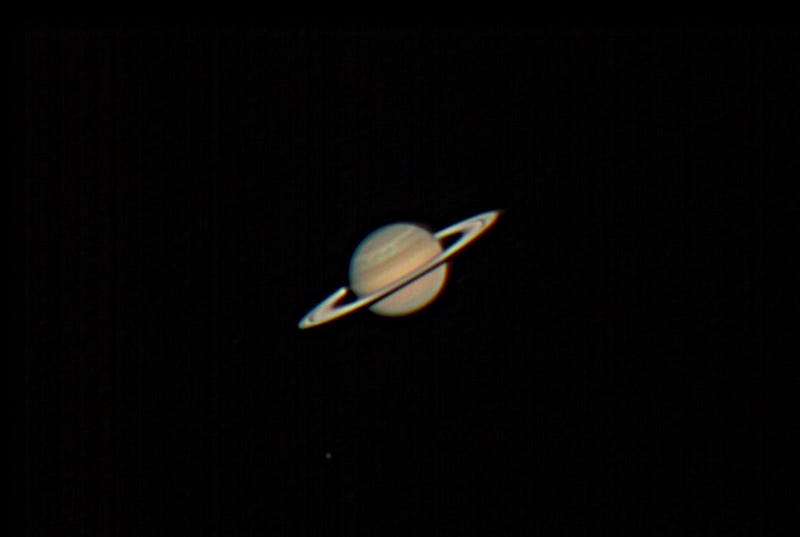
Saturn, when visible, has its rings clearly visible and often its brightest moon: Titan. Larger telescopes will bring out the varying bands of structure on both Jupiter and Saturn.

Mars appears a brilliant reddish-pink through any telescope, is clearly visible as a disk, and during many parts of the year, displays polar icecaps and/or clouds in its atmosphere, as well as changing features as it rotates.
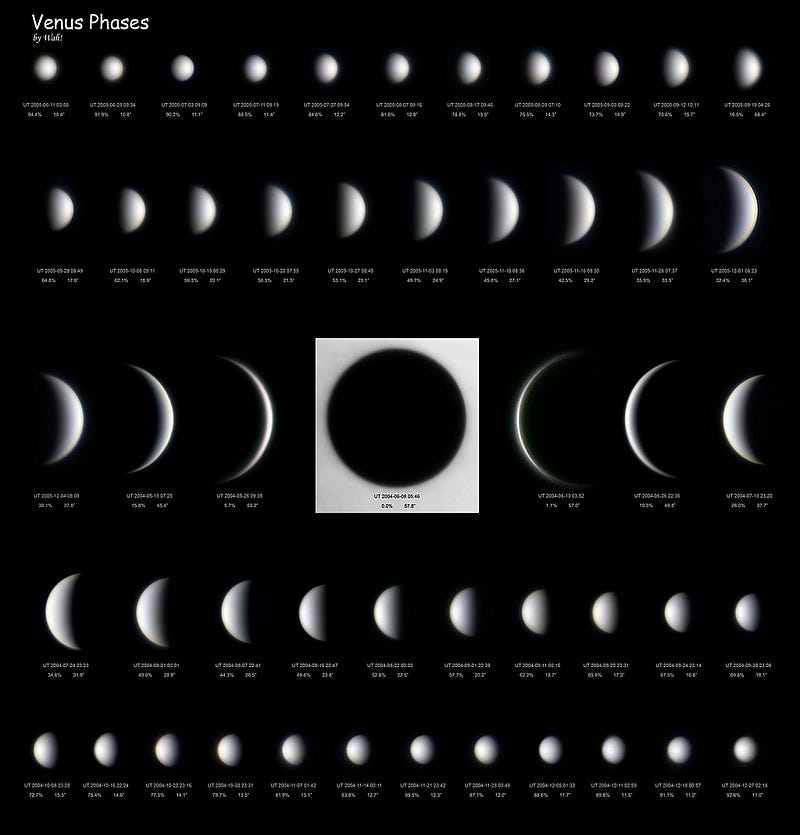
And Venus, the brightest of any of the planets, clearly displays phases, running the full range from large crescents all the way to a small full phase. All of these together provide some fantastic evidence that Venus orbits the Sun, and only displays these phases and varying sizes because of how our Solar System operates!
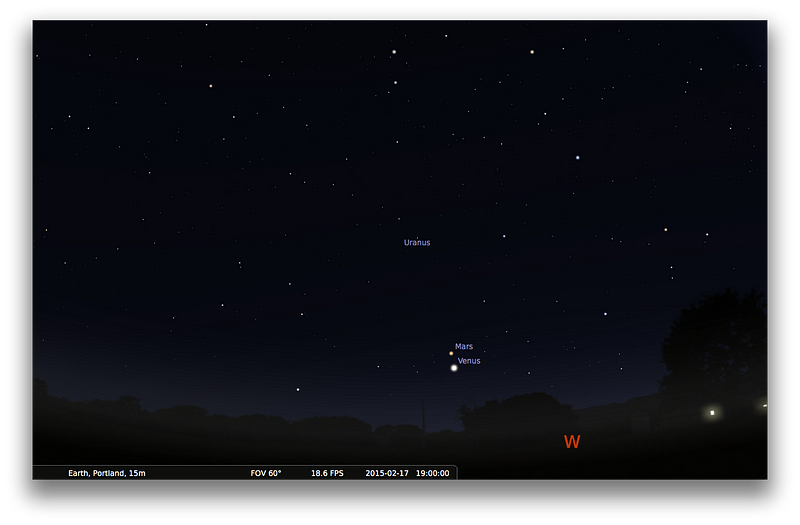
Tonight, Venus and Mars are close together in the sky, but appear low on the western horizon, where they’ll set shortly after sunset. The skies offer a spectacular opportunity to view Uranus, which although faint, is the brightest planet not named Earth to appear as a blue disk in the skies. In addition, telescopes of about 12″ or greater can see its four major moons as tiny, fainy points of light in orbit around it.
But the showstopper — something everyone should see in 2015’s winter skies — is the giant of our Solar System: Jupiter. Jupiter is very close to opposition, where it appears at its closest and brightest to Earth, and is visible all night long, as it’s nearly perfectly opposite to the Sun in the sky.
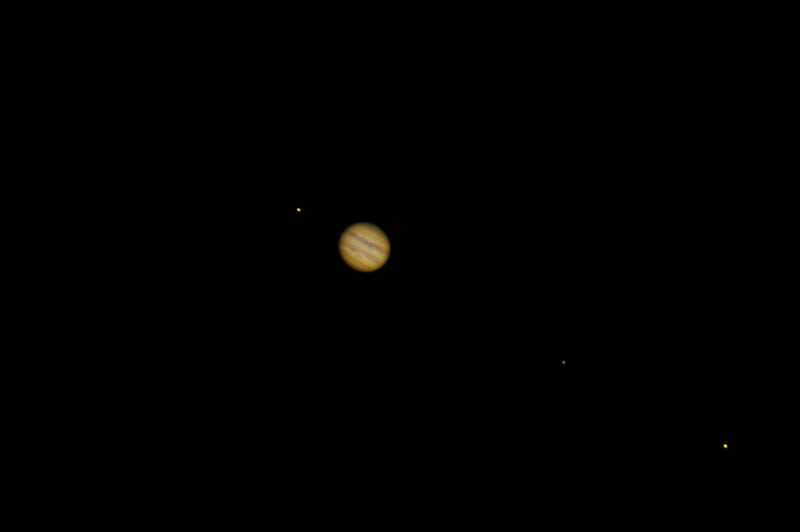
What you see here is Jupiter and three of its moons, shown extremely similarly to what your eye would see through a large (~18″) telescope, even under light polluted conditions. One of the very fun things to look for is — at 7:44 PM local time (where I am) — Jupiter will go from having three visible moons around it to four, as Io emerges from behind its shadow.

This means that observers who see Jupiter prior to 7:44 PM will see three moon, those who look after 7:44 PM will see four, and perhaps one lucky person will get to see Io emerge from the shadow altogether. This is an important sight in the history of astronomy as well, as the sunlight that bounces off the moon and arrives at our eyes was the first astronomical sight that enabled us to measure the speed of light!
But there’s plenty more than just planets in the night sky that are worthy of your attention.
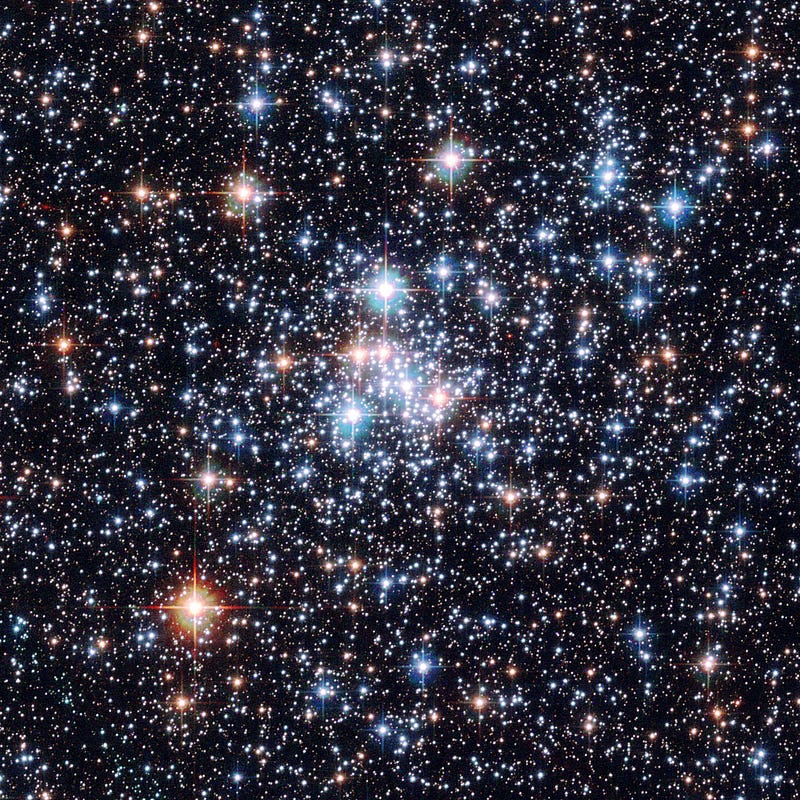
Star clusters. Even in light-polluted skies, these collections of newly-formed stars are brilliant through even small telescopes, but can be absolutely spectacular through larger ones. One of the mistakes people make when showing off the night sky through a telescope for the first time is going for maximum magnification right away, when it’s almost always the lowest magnification, widest-field views that are most spectacular.
My two recommendations for this time of year as far as which clusters are consistently the best for viewing through any telescope are the Double Cluster in Perseus (Caldwell 14)
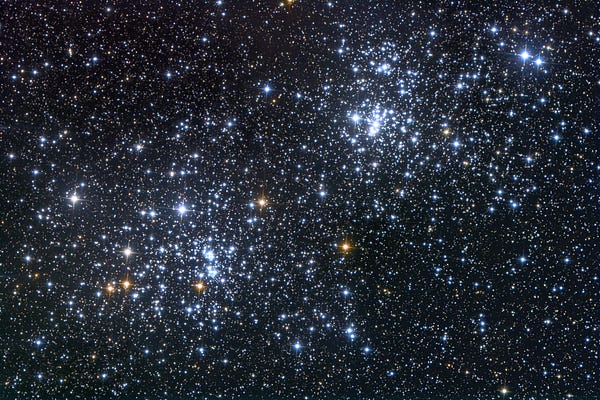

and the Pleiades (Messier 45).


They are both shown as the eye might see through a modest telescope (R) and what a long-exposure photo can bring out as far as details are concerned (L), including star colors running the gamut from blue to white to yellow to red.
Star clusters, like planets, are relatively unaffected by light pollution, and so make a great set of targets for observers anywhere, in addition to making a spectacular sight for those looking through a telescope for the first time.

A Multiple-Star System. One of the amazing things about stars that you might not realize very often is that even though they appear as single points of light in the sky, a great many of them are binary, trinary or even more complicated systems. My favorite one to illustrate this is one of the most viewed stars in the night sky: Mizar.
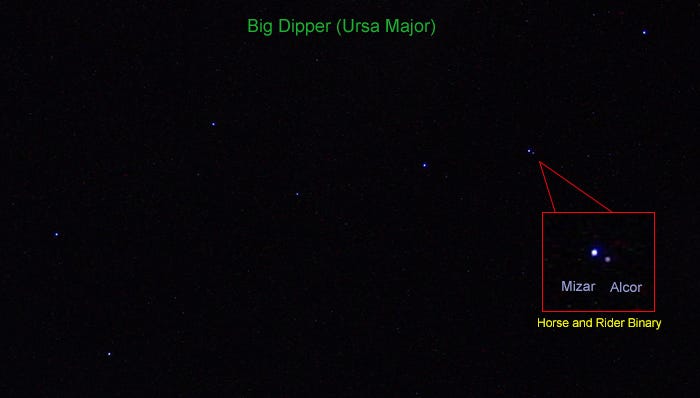
In the Big Dipper, the second star from the edge of the handle is Mizar, and about 1/5th of a degree away from it is another naked-eye star, Alcor. This is something you can see without a telescope, but with a telescope you can see a third, fainter star in between them.
With a good telescope, you can see that Mizar itself is actually a binary star, and with an outstanding (professional) one, you can actually see that the entire system is a sextuple star!
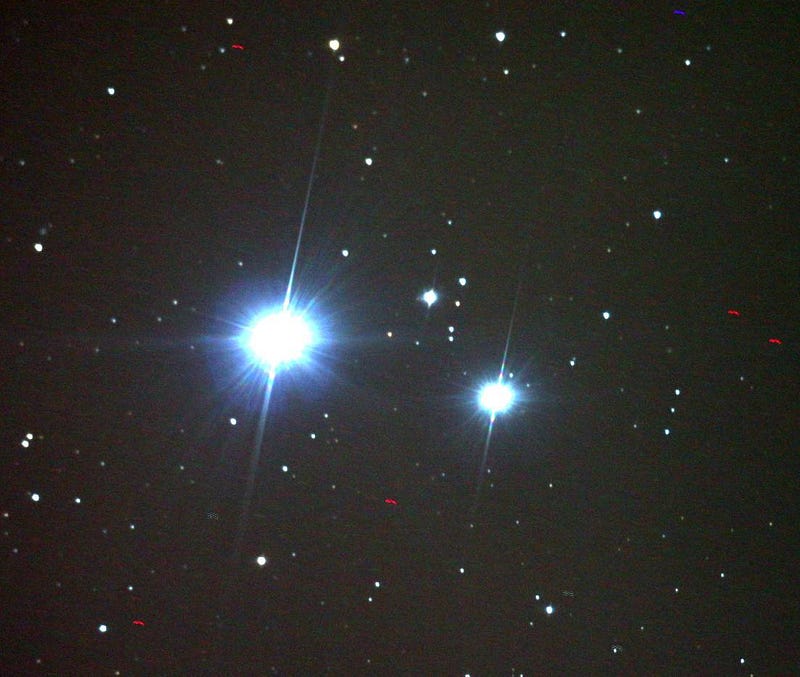
But what if you have darker-than-urban skies, or a much larger-than-average telescope? What are some of the more ambitious things you might try and observe?
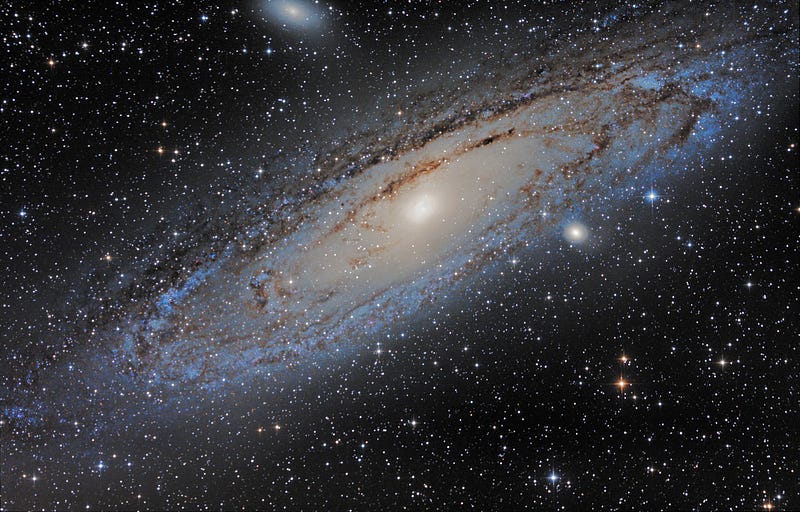
A galaxy. The brightest one visible from Earth, by far, is the closest large galaxy to us: Andromeda, Messier 31. What might appear as a faint, fuzzy “smudge” on the sky is actually an island of stars, gas and dust that’s larger and more massive than our own Milky Way! With around a trillion stars (that’s 1,000,000,000,000) in it, its core always makes for spectacular viewing, but this is an object you’ll want to make sure to view with as wide-field of a lens as possible.
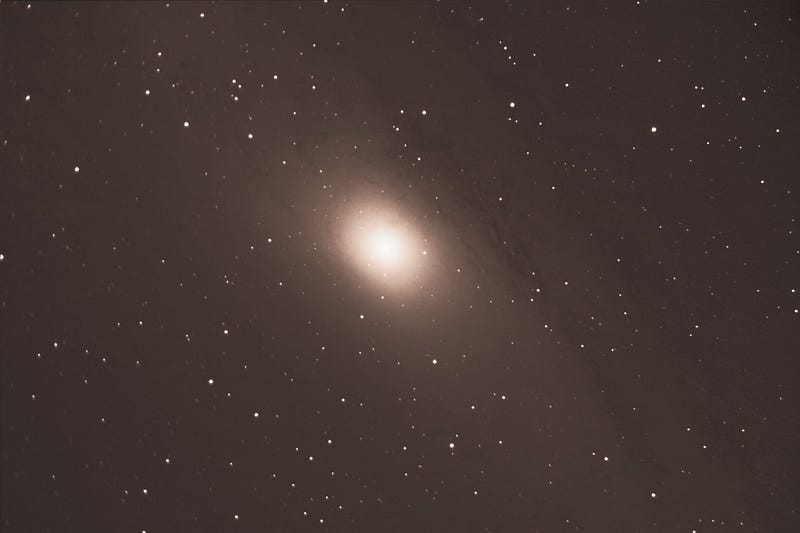
Light pollution can easily wash out some of the finer structure in this, but you can clearly tell that it’s angled towards us and progressively fainter as you move towards the outskirts. From here on Earth, it might seem absolutely amazing, but we’re looking at an object some 2.5 million light-years away, and the very first object we realized lay beyond our own Milky Way.
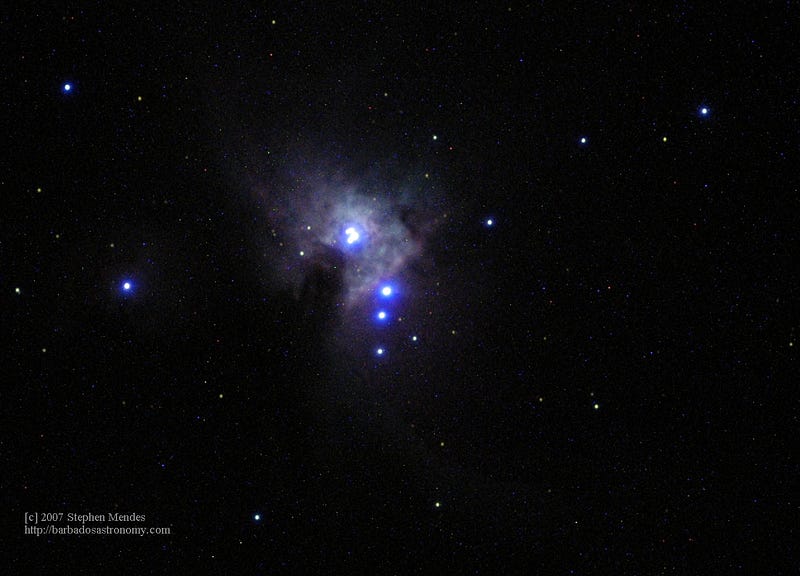
Star-forming nebulae. In the winter, there’s far-and-away one such region — the closest major star-forming region to Earth — that you should be looking at: the Orion Nebula (Messier 42). It’s visible under most skies to the naked eye, but through a telescope, there’s an awful lot to take in.

Individual, newly-formed stars are clearly visible inside, along with reflective, bluish features and absorptive dust lanes. The more powerful your telescope, the more extended are the features you can see, along with ever fainter-and-fainter stars.

You’ll never see through an eyepiece what you can with an ultra-long-exposure image (above) that can highlight individual elements or filters, but what you can see with a telescope is still a sight for the ages.
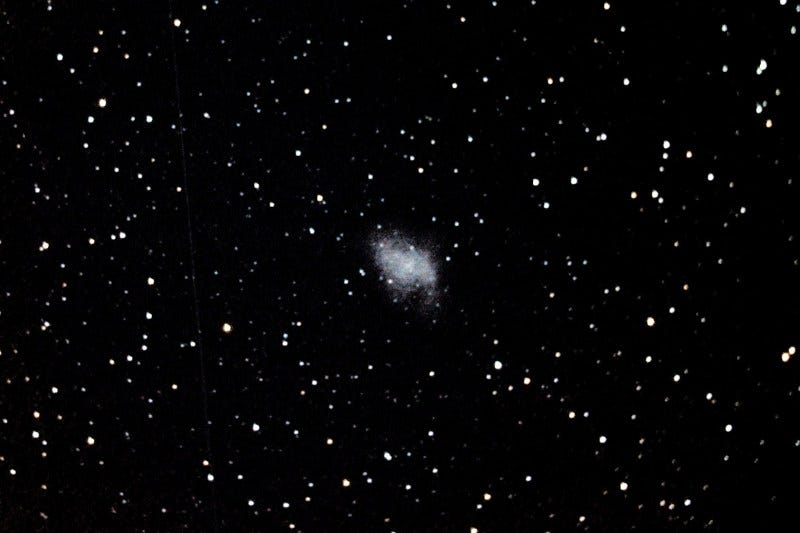
Stellar remnants. Stars don’t live forever: they either blow off their outer layers in a planetary nebula when they run out of fuel or die in a spectacular supernova explosion, if they’re massive enough. The two best planetary nebulae for viewing in the night sky — the Ring Nebula and the Dumbbell Nebula — are not visible during most of the night from the Northern Hemisphere at this time of year. But the best supernova remnant in the sky, the Crab Nebula (Messier 1), is.
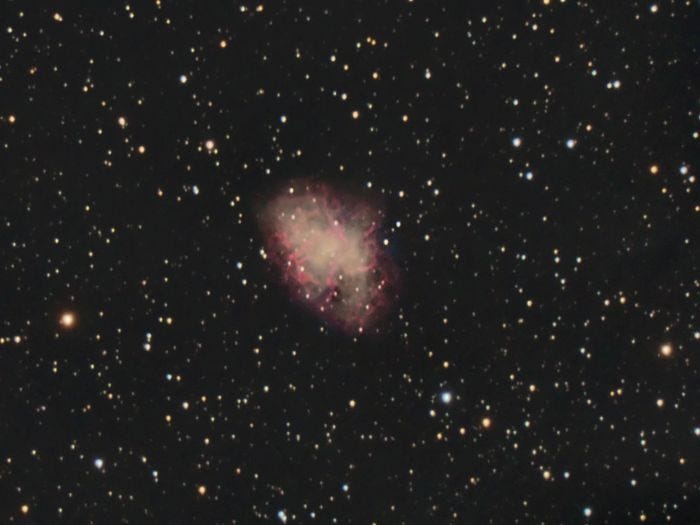
In 1054, a star about 20 times the mass of the Sun ran out of nuclear fuel in its core, causing it to implode. The implosion caused a runaway nuclear reaction in the core, and the ricochet expelled the enriched outer layers into interstellar space. This object appeared as though it could be the returning Halley’s Comet to Charles Messier in 1758, and he went on to create his catalogue — the first comprehensive catalogue of fixed, deep-sky objects — to assist comet-hunters in distinguishing transient objects from stationary ones.
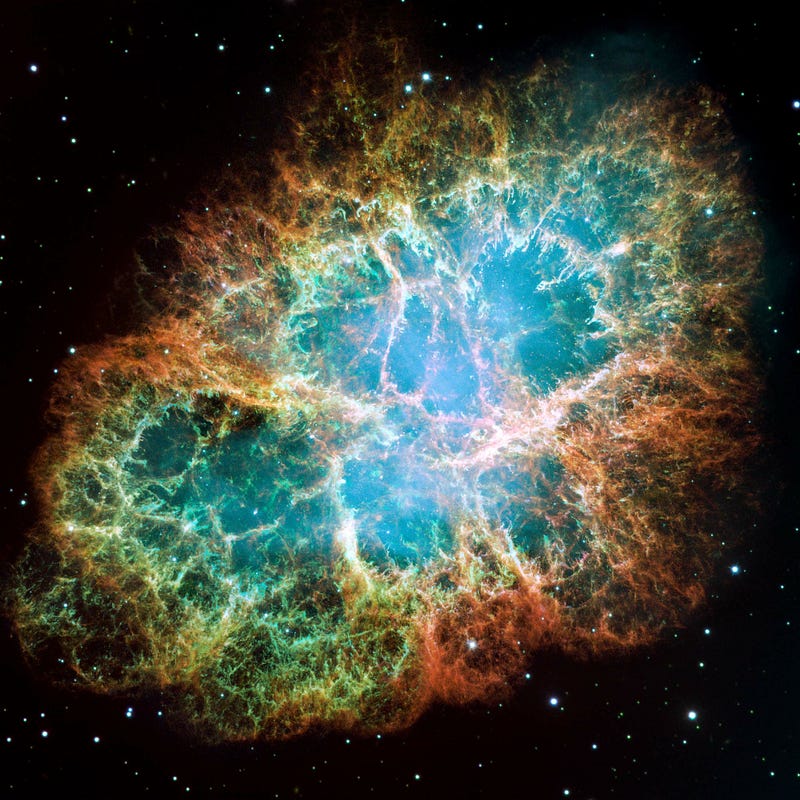
These are much fainter objects than the brightest galaxies or star-forming nebulae, and so light-polluted skies may render them virtually invisible, and of course you’ll never see it like Hubble can, above.
But there is one more spectacular sight, available only for the next few weeks, that I encourage everyone with a telescope to go look for.

Comet Lovejoy. Visible tonight just two degrees away from the star 51 Andromedae tonight, it actually should be visible through the end of March, and you can find it by referencing the chart below.

The comet will appear to have a green coma (shell) around it, with a fantastic tail, and you can tell what direction the Sun is in simply by noting that comet tails always point away from the Sun. Having a naked-eye comet is rare and short-lived, but through a telescope, not only will a comet be visible for far longer, but its features will be far more prominent.
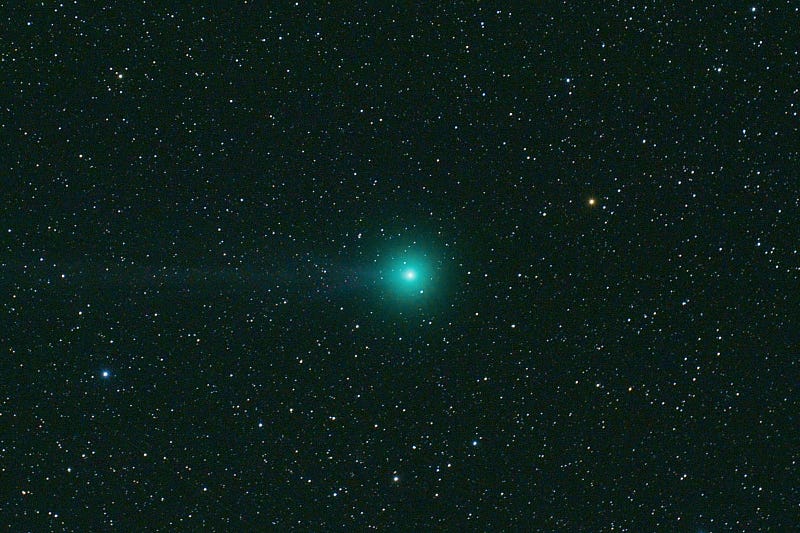
Comets are different than the other object in the sky, because to follow a nebula, galaxy or star, all you have to do is follow the rotation of the Earth, but comets — like planets — move at an additional speed relative to the fixed stars as well.
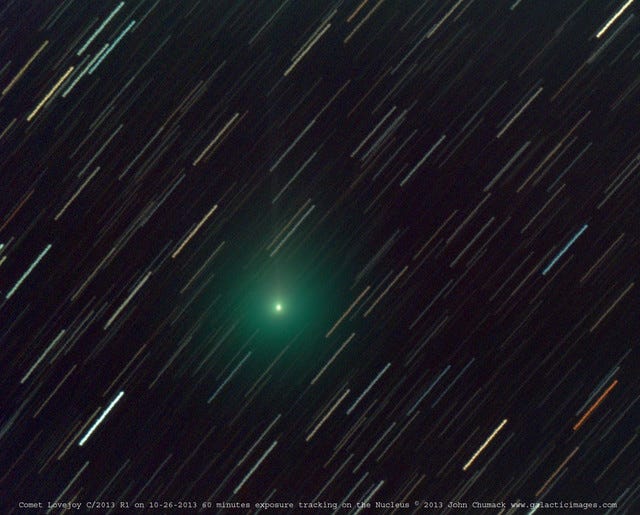
This should give you plenty to look at, but in terms of priority, I’d recommend looking at the following in terms of importance:
- Jupiter: far and away, this should be something you make sure everyone sees. The king of the planets and its moons are something that can’t be compared to any other sight.
- A star cluster: pick one, and take a good look at it. This is the next generation of what comes along in our galaxy, and the ones I’ll have you look at consist of stars that are only a few million years old. (5 million, in the Double Cluster; 80 million in the case of the Pleiades.) Our Sun was born in an environment like this 4.5 billion years ago, and what we’re seeing could give rise to the next generation of life in our galaxy.
- The multi-star systems: seeing what an individual point of light really is made of with your own eyes is like nothing else.
- Comet Lovejoy: this isn’t the kind of thing that comes along every day, but since it is here, go take a shot at it. There’s no telling when you’ll have another opportunity like this again.
- Nebulae, galaxies or stellar remnants: these are gravy, and worth it if you get to them. But as cool as they are, go for the others first!
And no matter what, don’t forget to share your joy and wonder at what’s up there in the Universe. It’s something we all share, and something that’s part of all of our own personal journey through this cosmos. Enjoy it, however you can, and thanks for sharing a little piece of the skies with me.
Leave your comments at the Starts With A Bang forum on Scienceblogs!





